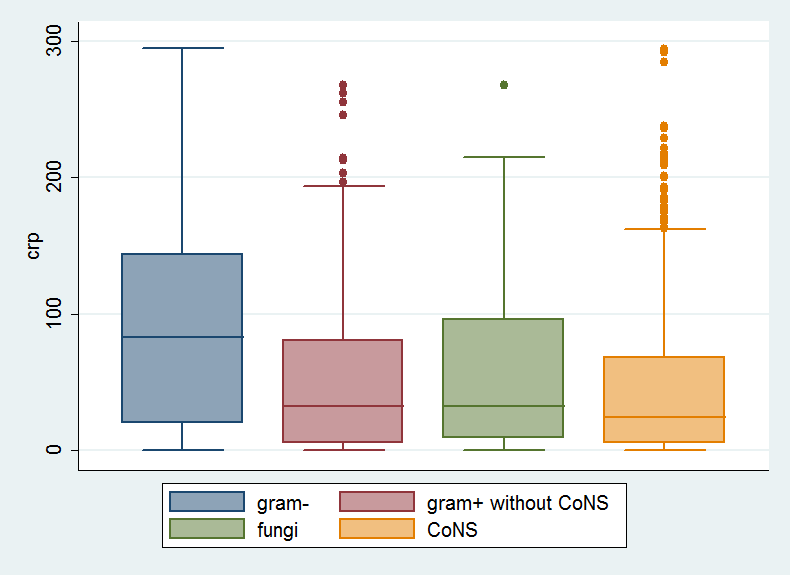Crp Elevation Associated with a Positive Blood Culture in Infants Participating in the Neonin Surveillance Network
J. Kopsidas, C. Kortsalioudaki, K. Zannikos, G. Kοurlaba, F. Anatolitou, A. Kent, T. Metsvaht, I. Lutsar, P. Clarke, A. Bedford-Russell, S. Pattnayak, T. Scorrer, T. Zaoutis, PT. Heath, N. Spyridis; on behalf of the Neonatal Infection Surveillance Network (neonIN); London, Norwich, Birmingham, Medway and Portsmouth (UK), Athens (Greece), Tartu (Estonia) and Philadelphia (PA, USA)
4th International Congress of Union of European Neonatal and Perinatal Societies (UENPS)
December 11th-14th, 2014, Athens, Greece
BACKGROUND: Sepsis is the commonest cause of neonatal morbidity and mortality. Clinical and laboratory findings are often non-specific. C-reactive protein (CRP) has been shown to be a useful marker in the diagnosis of neonatal sepsis but with limited data on whether different organisms causing sepsis affect it differently. This study aims to compare maximum CRP (maxCRP) elevation within 48 hours of a positive blood culture across different categories of organisms.
METHODS: We extracted data from neonIN, a multicenter web-based surveillance database for culture proven neonatal infections. 1397 episodes were analyzed between January 2011 and April 2014.
RESULTS: Overall patients had a median gestational-age of 27 (25-31) weeks and median birth-weight 910 (685-1535) g. 828 (59.3%) were male and the median postnatal-age at infection was 13 (7-28) days. MaxCRP elevation within 48hrs of positive blood culture was higher when Gram-negative bacteria were isolated compared to either Gram-positive bacteria (p<0.001) or fungi (p<0.001) (Table1, Figure1). Spearman's rank-order correlation coefficients calculated from the overall sample for CRP elevation and postnatal-age (rho=0.2495,p=0.000), birth-weight (rho=0.0412,p=0.1260) and gestational-age (rho=0.0698,p=0.095) show no significant correlations. The same analysis was done within the subsets of Gram-positive bacteria, Gram-negative bacteria, fungi and also by specific pathogen without significant correlation.
CONCLUSIONS: Gram-negative pathogens are more likely to cause higher peak CRP elevation in neonates compared to Gram-positive pathogens. We identified no significant correlation between peak CRP responses and gestational-age or birth-weight or postnatal-age.

Figure 1. maxCRP within 48 hours of positive blood culture by type of pathogen.
Table 1. Median and IQR of max CRP (mg/L) within 48hrs of positive blood culture by type of pathogen and gestational age.
| Pathogen |
Overall sample N=1397 |
GA <32 weeks N=1046 |
GA 32-37 weeks N=191 |
GA>37 weeks N=160 |
| Gram - | 83 (20 - 144) | 82.5 (18 - 141) | 64.5 (11.5 - 170) | 93 (32 - 147) |
| Gram + without CoNS | 32 (5 - 81) † | 29.5 (5.9 - 81) † | 30.8 (1 - 65) † | 48 (7 - 89) |
| CoNS | 24 (5 - 68) † | 24 (4 – 65.3) † | 39 (9.5 – 108.5) | 23 (6 - 44) † |
| Fungi | 32 (9 - 96) † | 45 (9 - 100) | 18 (11 - 60) | 35 (8 - 118) |
† p<0.001 compared to Gram-, after Bonferroni correction for multiple comparisons, GA:gestational-age



